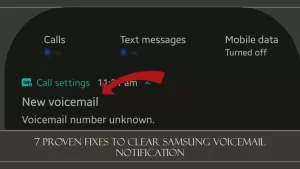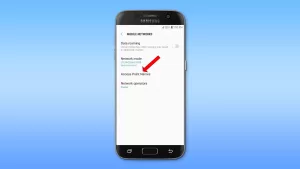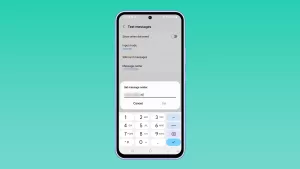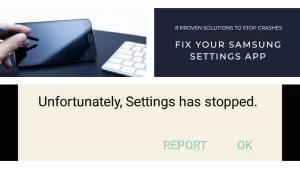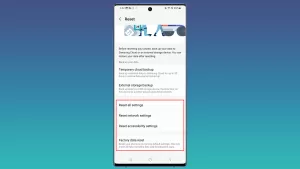A high-end device like your Samsung Galaxy Note 9 should work perfectly all the time. Little problems may happen every now and then but they get fixed easily even by a simple reboot. Some owners, however, have been complaining because their devices no longer have service or are getting really weak signal. A problem like this may happen all of the sudden but won’t stay long because more often than not it’s a network-related problem and your provider does everything to make things work the way they should.
But if your phone constantly loses service or always has weak signal, then you should look into it to determine what the problem is. In this post, I will walk you through in troubleshooting your Note 9 that has a network-related problem. So, if you’re one of the owners of this phone and are currently having similar issue, continue reading as this article may be able to help you one way or another.
Before we move on, if you are looking for a solution to a different problem, then drop in on our Note 9 Help Guides as we already solved some of the most common issues with this device. We may already have published articles that could help you fix your problem. Take a little time browsing through that page and look for similar problems.
Now, going back to our troubleshooting, here are the things you need to do if your Note 9 has no service or weak signal…
Restart your Note 9 first. As I said earlier, I’ve seen cases wherein problems like this got fixed by simply rebooting the phone. It could be one of those cases especially if it’s the first time that the problem occured. Glitches happen all the time and the best way to counter that is a reboot but in this case, it’s better to perform the forced reboot instead as it’s far more effective than the normal reboot.
Press and hold the volume down button and the power key at the same time for 10 seconds or more. Your phone will reboot like it normally does but its memory will be refreshed and all its apps and services reloaded.
If, however, your Note 9 still has no service or has weak signal, then move on to the next procedure.
Reset Network Settings. Apparently, it’s a network-related problem and I don’t want you to go through all the hassle of checking every setting to see if they’re enabled or not. Instead, I need you to just reset all network settings of your phone which covers everything as far as network and wireless communications are concerned.
- From the Home screen, swipe up on an empty spot to open the Apps tray.
- Tap Settings > General Management > Reset > Reset network settings.
- Tap RESET SETTINGS.
- If you have set up a PIN, enter it.
- Tap RESET SETTINGS. Once complete, a confirmation window will appear.
After doing this procedure, the following changes will occur so make necessary changes…
- Stored Wi-Fi networks will be deleted.
- Paired Bluetooth devices will be deleted.
- Background data sync settings will be turned on.
- Data restrictive settings in applications that were manually turned on/off by the customer will be reset to the default setting.
- Network selection mode will be set to automatic.
After this, try to see if your phone now gets decent reception or signal. If the condition didn’t improve, then move on to the next solution.
Backup your files and reset your phone. At this point, it’s important to just reset your phone to know if this problem is caused by some unknown firmware issues. If it is, then a reset will be able to take care of it. So, take time to backup your files and data as they will be deleted during the process and after which, follow these steps to perform the master reset:
- Back up data on the internal memory. If you have signed into a Samsung account on the device, you have activated Anti-theft and will need your Samsung credentials to finish the master reset.
- Turn off the device.
- Press and hold the Volume Up key and the Bixby key, then press and hold the Power key.
- When the green Android logo displays, release all keys (‘Installing system update’ will show for about 30 – 60 seconds before showing the Android system recovery menu options).
- Press the Volume down key several times to highlight ‘wipe data / factory reset’.
- Press Power button to select.
- Press the Volume down key until ‘Yes — delete all user data’ is highlighted.
- Press Power button to select and start the master reset.
- When the master reset is complete, ‘Reboot system now’ is highlighted.
- Press the Power key to restart the device.
After the master reset, don’t install anything yet. Instead, try to see if the problem still occurs or not because if it still does, the problem could be related to the hardware. In such case, you need to have it checked so the technician can diagnose the problem properly.
RELATED POSTS:
- How to fix Samsung Galaxy Note 9 with Google Play Store error 495
- Samsung Galaxy Note 9 showing “Unfortunately, Internet has stopped” error
- How to fix Samsung Galaxy Note 9 with “Can’t download app. (Error code: -20)” issue
- Samsung Galaxy Note 9 keeps showing ‘Message sending failed’ error
- How to fix Samsung Galaxy Note 9 Black Screen of Death (BSoD) issue
I hope that we’ve been able to help you fix the problem with your device. We would appreciate it if you helped us spread the word so please share this post if you found it helpful. Thank you so much for reading!

